A Very Inconvenient Truth…Indeed!
I apologize for failing to issue a post in over a month. Since the first of the year, life has been a little busier than usual — my sabbatical is over and I’m working on a couple of websites (including the reworking of iTrax.com), and am involved in a couple of other projects. I’ve also been focused on wrapping up the HD-Audio Challenge (more on that below). And then there’s the last minute invitation to join some very close friends on a back country ski experience in British Columbia. I’d done this once before and couldn’t pass up the opportunity. I bought a last minute plane ticket, secured a substitute for my classes, grabbed my passport, and took advantage of the President’s Day holiday! Canada here I come.

I survived the week in Canada but did manage to seriously tear my left calf muscle on the morning of the last day. I wasn’t even winding my way through dense trees or carving gentle deep snow turns through an open alpine bowl. I lurched forward on a long traverse and “pop” went my lower leg. When you’re in the midst of hundreds of thousands of acres in the back country of British Columbia, you don’t simply pack up and go home. I kept skiing for the rest of the day AND flew the next weekend to Bozeman, Montana for another three days of skiing at Big Sky. The terrain and conditions were far less extreme on the groomed intermediate runs at Big Sky. But my leg still complained.
It was while showering I noticed my entire lower leg was one big bruise. The purple, blue, and orange coloration was obvious and everywhere. And my left calf was one inch larger in circumference than the right one. Upon my return to Los Angeles, I visited my doctor. He did an ultrasound to rule out blood clots and DVT and sent me for an MRI the next day. Apparently, I did some pretty serious damage to the muscles — so much so in the opinion of my doctor — that I spent 5 hours in the emergency room on Thursday evening. More scans and a chance to catch up on some reading.
No infection, no clots, no threat of stroke were detected. The path to recovery (before my next ski trip at the end of the month) was to elevate the leg, ice it regularly, wear a compression sock, and stop skiing until the swelling goes away. It’s a drag getting older. But you have to ski!
Now It’s Personal
While I was traveling in Canada, a longtime reader and friend sent me an email and asked if I was aware of Paul McGowan mentioning my name and discussing my thoughts on high-resolution audio in a couple of videos. As most of you know, Paul is the principal of Boulder-based PS Audio and a frequency commentator on high-end audio. In fact, it was Paul’s daily blog that inspired me to start this blog over 6 years ago. He’s moved on to posting videos and is frequently interviewed by audiophile websites. I’ve visited Paul at his offices in Boulder and usually bump into him at audio trade shows. I don’t always agree with Paul, but I genuinely like him and have owned PS Audio equipment in the past.
I located the first video and watched as Paul laid out his thoughts on high-resolution audio in a six minute video titled, What’s the Truth Behind Vinyl Records. At about 2:44 seconds Paul starts opining on that question.
He emphatically states:
“High resolution audio, whether you believe it or not, sounds better than standard resolution CD.”
Paul McGowan from the PS Audio Video “The Truth Behind Vinyl Records”
Honestly, I would love to agree with Paul. In fact, I used to believe the same thing. I invested millions of dollars and 20 years of my life producing REAL high-resolution audio albums, won awards and recognition for my unique recordings, and have received glowing reviews from writers and customers alike since 2000 (Anthony Cordesman’s article on surround music albums in the February issue of The Absolute Sound singles out AIX Records for producing surround music of “consistently high sound quality“). I’ve read most of the studies on the perceptibility of high resolution audio vs. standard resolution, have participated in a few, and am in the midst of my own survey on the topic. Paul’s “matter of fact” assertion — whether I believe it or not (?) — that hi-res sounds better than standard resolution simply isn’t supported by the facts or science. He is certainly entitled to his opinion. I would welcome his participation in the HD-Audio Challenge II, which might help refine — or inform — his opinion. The video has been viewed over 70,000 times and his insistence on promoting “hi-res audio” as a fact only contributes to confusion and wasted spending by unknowing audiophiles. And it helps hardware companies sell more “hi-res audio” hardware.
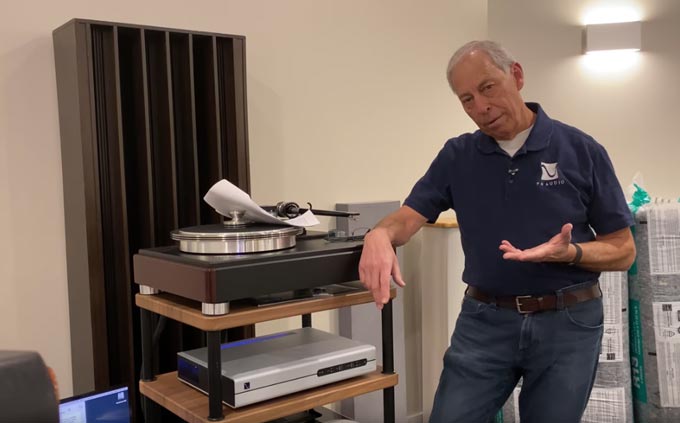
He continued:
“High-resolution audio, whether you believe it or not, sounds better than standard-resolution CD. OK? Tit for tat, if you take a 16-44 recording that was originally made at 16-bits 44.1 kHz sample rate and at the same time with the same microphones and the same everything you also made a 192-24, and you made a DSD version. You got all three recorders going. From the same feed handled the same way. If you sit in our in our mastering studios at Octave Records and you listen to that — you don’t have to have golden ears to hear the difference. I don’t care what Mark Waldrep has to say about that because in many cases Mark is correct that upsampled makes no difference whatsoever. Simply raising the sample rate doesn’t help the sound but done properly, it does! Now where was I going with that. OK.
I can also make the claim that I have a number of 44.1 Red Book CDs that sound far better than two thirds of the ‘high-resolution’ recordings that I have. Do I then suggest that CD is better or the same as high-resolution audio. No, that’s silly. That is silly. We have this great VPI turntable, and our stellar phono stage, an excellent piece, an excellent piece. I’ve got some records in here that will just blow your socks off. And the CD version sucks! Does that mean CDs suck? Nope. Does that mean vinyl’s better? Nope. I just think we need to be careful with our words. And not jump to conclusions.”
I agree with Paul that the fidelity of the source recording — not the distribution format — is by far the critical factor in our ultimate listening experience. But his claim about high resolution sounding “better” than CD Red Book audio is his own unsupported opinion. His suggestion that simultaneously making a recording at 192 kHz/24-bits, 44.1 kHz/16-bits, ,and DSD 64 will sound different misses the point entirely. I’ve participated in a similar experiments. It is virtually impossible to guarantee that the signal path, calibration and alignment, processing, converters, etc. are identical for each of the different formats compared.
Paul should care what I have to offer on this subject. I’ve actually researched it AND I have a catalog of recordings that proves my point.
More from Paul…
The second video is an interview conducted by John Darko of Darko Audio and can be found at SoundCloud under the title, EXPERT OPINION: Paul McGowan (PS Audio).
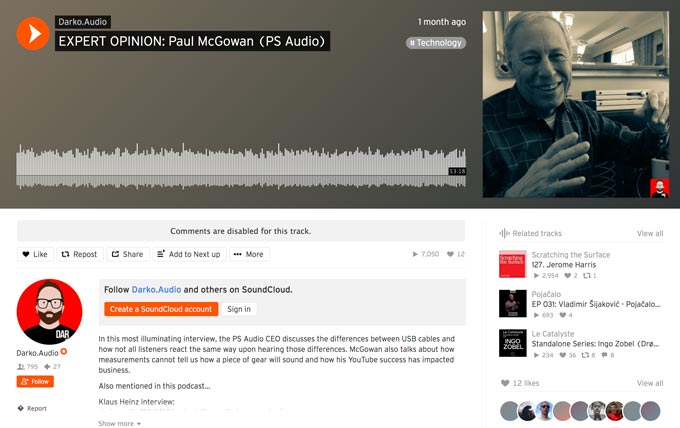
At about 22:04, the following Q&A occurs:
PM: Do you know Mark Waldrep?
JD: I know him by reputation. I’ve never met him.
PM: Yes, Dr. AIX or whatever. He’s a super nice, wonderful man. Very knowledgeable. And, of course, he’s been on this rant that high-resolution audio doesn’t work. And one day at our old building, he showed up and put me to the challenge. And I was fascinated because, uh, we had a number of standard resolution vs. higher resolution pieces. And we sat there and listened to them. And I said, ‘surely Mark you heard the difference’ and he’s shaking his head going ‘absolutely’. So I said, ‘well, then you’re changing your stance?’ ‘Nope.’
JD: Wow!
PM: And yeah. It was…his thing was, it could have been mastered — and he’s right, he’s absolutely right — it could have been mastered different or was. I happened to know that these weren’t, but that’s ok. I forgive him because he has enough knowledge to know that unless you do a really rigorous test, there’s no way. But imagine him changing his – not only world view — but his whole economic model. That’s, that’s a lot to ask.
JD: Right, yes. It’s a very inconvenient truth for someone like him.
I remember visiting the PS Audio offices in the spring of 2015. My sister lives just outside of Boulder and I get to that part of the country quite often. I wrote four articles about my visit to PS Audio and the about the time Paul and I spent in his listening room auditioning tracks from the AIX Records catalog and a few from a collaborative project PS Audio is involved with. If you’re curious, you can read those articles by clicking here.
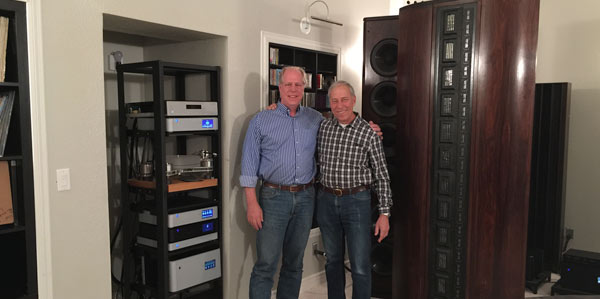
My own recollection of our time together is well documented in the four articles I wrote — AND is at odds with what he shared with John Darko. Paul says that we compared high resolution and standard resolution versions of the same tunes. I know we didn’t do that with any of my tracks because I don’t routinely have standard resolution versions with me. And he played tracks from his collaboration project only in a single version — I assume the best quality available. The point of our meeting wasn’t to evaluate the merits of high resolution vs. CD spec. It was a friendly listening experience that showed off a few of my favorite tracks on his equipment.
So I have to wonder why he would get creative with his account of our time together. And even if the events occurred as he says they did, I am confident that I would acknowledge what actually happened and adjust my position accordingly. In fact, I have changed my stance on hi-res audio during the years that I’ve been involved with high resolution recording. Being honest and maintaining my integrity in a world full of economic and social pressure is often hard to do. So when Paul imagines how challenging it would be for me to change my position on hi-res audio (something I have done) — my world view — given the economic impact it might have on my specialty audio label, I simply have to respond by asking how difficult it might be for him to acknowledge that high resolution playback might not really matter. The impact on PS Audio would undoubtedly be greater than it would be on AIX Records — a small company with no employees. I don’t make my living by selling records or running my label. I’m a university professor with a healthy side business in audio. I started my record label to demonstrate the potential of state-of-the-art recording technology.
An inconvenient truth indeed — but not for me.
HD-Audio Challenge II Update
I had lunch with Jerry Del Colliano, the former owner and editor at AudiophileReview.com and HomeTheaterReview.com about a month ago. During a very nice meal at the Riviera Country Club, be shared that he had sold both websites. He also suggested that I get in touch with the new owner and offer to contribute an article or two to the sites. I always hesitate from writing for other sites. I have written extensively for paper publications. I had my own monthly column in DVD Professional many years ago. But my positions often run contrary to the industry mainstream and my columns have been censored by those that believed they knew better.
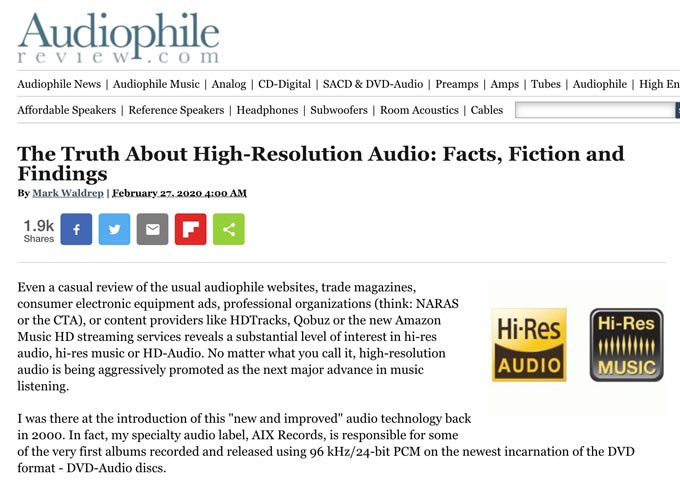
I spoke to Eric, the new owner, and I suggested an initial article on hi-res audio AND a connection to the ongoing HD-Audio Challenge. He liked what I wrote and posted it on the 27th of February at AudiophileReview. It has resulted in an additional 1200 requests to participate in the HD-Audio Challenge II. You can read my article at The Truth About High-Resolution Audio: Facts, Fiction and Findings.
So the HD-Audio Challenge II lives on — at least until the end of the month. I’ve provided the file credentials to over 1500 individuals, 700 have confirmed receipt, and over 200 people have submitted their results. If you’re one of those that has not yet provided your feedback, please follow this link to complete the process.
If you still want to participate, please fill out the form below:

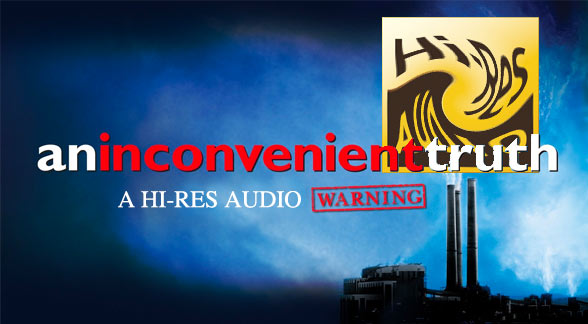
Quite a bit of rocker in those skis! Looks like fun.
The thing that amuses me most about PM is his enthusiasm for DSD with a complete inability to explain the difference between it and PCM.
I like Paul. But I sometimes have to wonder where he gets his information. He has a lot of followers and is an influencer.. But he’s an audiophile.
Something a bit off the tracks with you Mark, I moved my whole life to Florida to escape that weather, and your chasing it, then gettin beaten up for doin it. LOL Be careful will ya, we don’t want to lose your excellent recordings.
BTW, I case your not aware, lots of good words being spoken about your recordings on the QuadraphonicQuad website. Members there really appreciate your excellent multch work. 😉
https://www.quadraphonicquad.com/forums/search/43005/?q=Dr+Aix&o=relevance
Thanks Sal. I don’t visit the QQ very often but it’s nice to read so many positive comments about my work.
Very confusing by using another context from your visit to PS Audio Facilities. By the way, could it be possible to be less presumptuous about your credentials and achievements? Sometimes are annoying when you are so repetitive. I really dig your information but sometimes your ego gets in the way. Sorry for being honest for my perception, just wanted to let you know. Best regards. JCGE.
Juan, I can appreciate your comments. And yes, I tend to be a little self-righteous and critical. Paul’s comments — especially since what he said about my reaction didn’t happen — raised my hackles. He’s a friend and I would hope that his messaging would be critical and fact based.
I I never changed my position. I said from the outset that HD wouldn’t improve anything. The reasons are obvious when you study the science and engineering. Do the math. It tells you everything you need to know. Look at the data. HD adds nothing audible.
BTW, I am still not convinced that MQA’s audio origami even works. It still seems to me to violate the Shannon Nyquist criteria. That criteria is simple enough. With a digital signal of X bits per second you cannot handle an analog signal in the digital domain with a frequency any higher than X/2 hz. No amount of spectral shifts, level shifts and combining them gets around that accepted fact. During my career as an electrical engineer I’ve worked in the telecom industry for 17 of those years. Who doesn’t believe Shannon Nyquist? Some audiophiles.
The more I studied the detailed of RBCD the more in awe I became of what an incredible achievement its inventors had created. Belt, suspenders, another belt, another suspenders, and on and on and on. They got it right. It is good enough that there is no reason to try to improve on it. It exceeds every criteria that is pertinent to storing and retrieving electrical signals that are supposed to be analogs of music. Are they true analogs? No, not by a long shot but given the task RBCD does perform it’s more than good enough and better performance will get you nothing of value.
Are much better sound systems possible? Absolutely yes. But you can’t get there by trying to do anything you are doing now better. It’s a dead end and it has reached its absurd limits. Compared to real music what comes out of the best this current concept has to offer is dead, flat sounding, wrong tone, wrong dynamics, no envelopment, missing reverberation, wrong everything. It’s not good and the more experienced you are with live music the more apparent the shortcomings are. If you are going to try to achieve high fidelity sound recording and reproduction then it is best to study sound and hearing, not electronics first. If there is one fact that you must know to understand sound it is that sound fields are fluid dynamic vector fields, the fluid being air. Study them, analyze them, model them, and then figure out how to duplicate them from a recording. So far there is no way to record and reproduce them. But they can be reconstructed from what you do have. That’s what EEAS does, it reconstructs sound fields and they can be manipulated in may ways ordinary sound systems at any price can’t. Paul visited my house some years ago and heard my EEAS prototype. He will not talk about it. It violates practically everything audiophiles believe in and cling to for dear life. Does it really work? I wouldn’t trade it for anything at any price. Does it have any commercial possibilities? Sadly no. Of 20 companies I contacted when I patented it, none of them were interested in developing it. Later I saw that the probability of creating a marketable product from it was about zero. So the existing prototype will be a one of a kind curiosity for my enjoyment. I’m not giving any more of its secrets away than I already have.